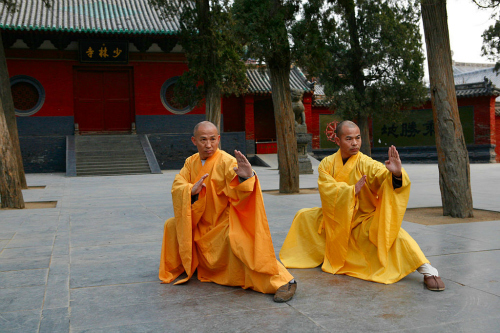It can be an unnerving experience to be lost in a big new city, surrounded by unfamiliar and unfriendly looking faces. It doesn’t matter how safe a city really is, it can feel genuinely threatening to a disorientated visitor.
Knowing a few tricks of self-defence can give a boost to confidence. Rather than timidly worrying about imagined foes you can rest assured that you’ll be able to protect yourself if something unpleasant does happen.Martial arts are a great way to generate this self-belief, but are also a great way to keep fit and meet people. Most martial arts are taught in group lessons and combine the techniques of fighting with general fitness conditioning. Many styles also include meditation techniques to clear the mind, reduce stress and increase motivation.
Martial arts aren’t about stepping into the ring and seeking glory; the vast majority are open to peace-loving civilians who seek a fun sport in a tight-knit community. Very few instructors will turn anyone away on the grounds of gender, experience, size or fitness.
As well as getting into shape, chilling out and making friends, martial arts can be a great way of connecting with the culture of your new home. Most styles have a historical link to particular countries and have been practiced for generations. So put ‘em up and pick your knockout new hobby.
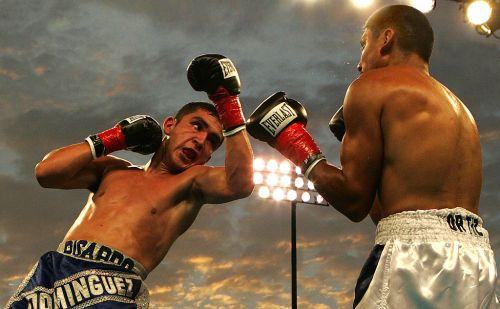
Men have been studying the ‘sweet science’ since ancient times. Boxing is recorded as being included in the Olympic games of 688BC and appears in artwork from historic cultures around the world.
The modern sport grew up in 19th century Britain as the Marquess of Queensberry’s rules set limits for bouts, making it easy to control and score a fight.
This new control sparked a craze in amateur boxing which spread around the world and continues to this day. For every professional heavyweight champion there are thousands of amateurs who train for pleasure and fight for the thrill. These numbers include a rapidly growing number of women who can be found at all levels of the sport.
For men and women who don’t fancy stepping into the ring, there are various boxing-inspired fitness classes that can keep you fit without having to face an opponent.
Boxing can be found all over the world, with particular strongholds being Cuba, Puerto Rico, USA, Mexico, UK and Ireland.
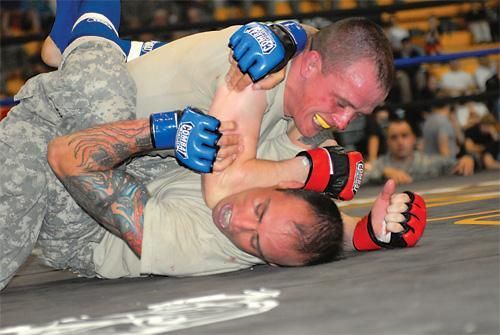
A relative newcomer to the martial arts scene, MMA has its origins in ‘ultimate fighting’. Also known as ‘cage fighting’, the original idea was to take masters of various fighting styles and have them duke it out to see which martial art was the best.
Now a multi-million dollar international business, MMA has become a fighting style of its own, cherry-picking elements from other martial arts. The resulting hybrid is a mix of mental agility, aggression, stamina and strength, meaning that the biggest dog in the fights doesn’t always win. Often a smaller, quicker fighter who waits for the right moment to strike can beat a bigger opposition.
Much like boxing, MMA has a wide amateur scene and is seeing an increase in the number of women putting on gloves. The training is intense, building up strength and speed as a well as mental grit. Most MMA gyms train small groups of aspiring warriors to eventually take on an opponent.
Because of the intense training and mixed pedigree, even the amateur MMA enthusiast is fit and able to look after themselves in a sticky situation.
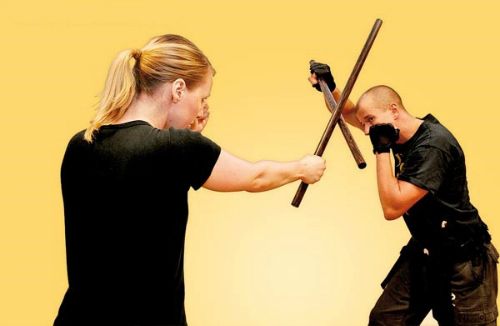
Arnis is also known as Eskrima and Kali. Whatever it is known as, it is serious business. The national sport of the Philippines, the martial art is a battle-tested fighting style which began with peasant farmers.
Leaving the land to join ancient battles, the farmers would bring their tools along, modifying them into terrifying weapons. The arsenal eventually grew to include sticks, swords, knives, clubs and hand-to-hand combat.
After centuries of practice, Filipino rebels were able to use Arnis to wipe out an entire company of American soldiers armed with 20th century weapons. The fury of these warriors was feared as much as their skill with weapons; one American officer was killed by a rampaging Filipino even after shooting his assailant six times.
A key component of historical Arnis has been one-on-one duels, where fighters use real weapons to test their skills and prove their bravery. Although outlawed due to the high death rate, Arnis duels still occur in parts of Manila.
Modern Arnis is usually much safer, with rubber weapons and padded suits protecting amateurs from harm.
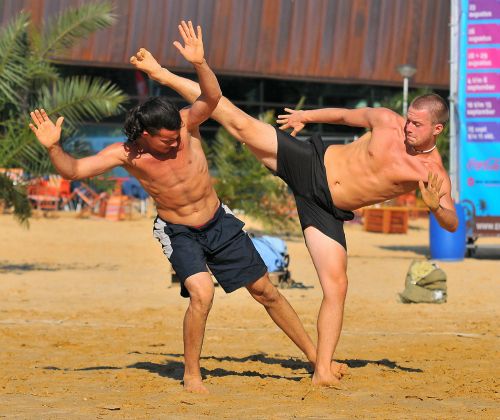
One of the most stylish martial arts is also one of the fastest-growing thanks to celebrity practitioners like Rihanna. It also helps that this dance-inspired style has a spiritual home on sun-kissed Brazilian beaches, where it’s not uncommon to see tightly toned bodies wheeling and twirling.
Capoeira uses fluid movement and graceful cartwheels to create the momentum for devastating kicks and punches whilst skilfully evading incoming blows from the opponent. All this happens to the sound of music.
The music not only sets the rhythm for two opposing fighters, but also serves a reminder of the art’s roots. Capoeira’s fluid style comes from the need to hide its fighting elements. Originally invented by slaves intending to escape from Brazil’s sugar plantations, practitioners disguised the kicks and punches as dance moves and turned sparring sessions into dance-offs.
Modern Capoeira still adheres to a ‘no contact’ policy, making it a great low-impact sport for those who want to avoid bumps and bruises whilst kicking ass in Brazil.
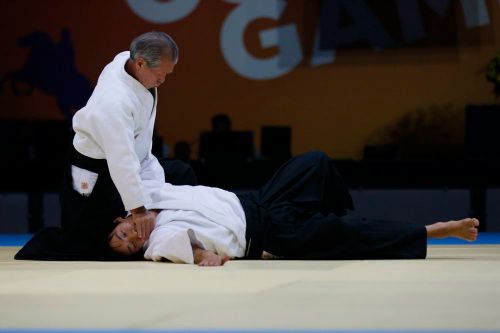
Aikido is a modern Japanese martial art that, while effective, is also one of the gentlest fighting forms out there. Known as the “way of harmonious spirit”, Aikido contains no kicks or punches, instead using the momentum of the attacker to throw them off balance. Purely defensive, the art form allows users to take their attacker to the ground and keep them there with minimal harm to either party.
The martial art places great weight in mental development, demanding practitioners are ready “receive 99% of an opponent’s attack and stare death in the face”. This should translate to a calm, stress-free working life and increased confidence.
Aikido has been updated so that as well as unarmed assailants, experts can disarm attackers carrying sticks, knives, swords and even guns.
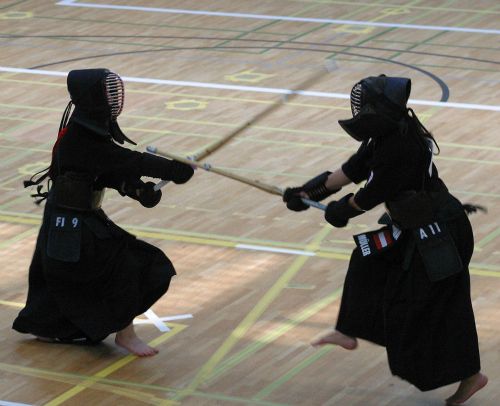
Kendo is a modern interpretation of ancient Japanese swordsmanship. The Samurai would recognise elements of this combat sport, its weaponry, ethos and fighting style.
Kendoka, or students of Kendo, use bamboo swords in a full contact duel, cutting and thrusting with the swords. The clatter of bamboo and shouts in Japanese make the average dojo a hot, noisy frenzy of anonymous warriors.
To provide protection from the swinging bamboo, kendoka wear floor-length trousers and a tunic over body armour and gloves. The intimidating look is finished off with a stylised helmet a Star Wars villain would be proud of.
Of course, it’s unlikely that the average expat will find themselves swinging a sword in a life-or-death duel with a Samurai Lord. Luckily Kendo does have some top tips for modern life, aiming to “cultivate a vigorous spirit” and encourage kendoka to “associate with others with sincerity”.
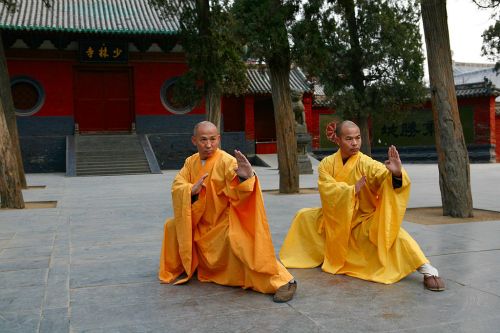
You may never have heard of Wing Chun, but you must have heard of Bruce Lee and Jackie Chan. And you’ve probably heard of Kung Fu, the catchall term for Chinese martial arts, of which Wing Chun is the style most Westerners have seen on screen.
Wing Chun appears in The Matrix, and real-life practitioner Robert Downey Jr showcases the style in the Sherlock Holmes films. Wing Chun is one of the most familiar martial arts to cinemagoers.
Most people, however, don’t know that a woman invented the style. Yim Wing-Chun fended off the advances of a local warlord, challenging him to fight one-on-one; if he won, she would marry him. Rapidly learning to fight from scratch, she met a Shaolin nun who invented a style based on a fight she saw between a snake and a crane. Yim Wing-Chun won her bout and was able to choose her own husband.
Wing Chun places emphasis on flexibility and a solid base, using the combination to put incredible force behind kicks and punches. With good technique, even the smallest fighter can devastate the strongest opponent.
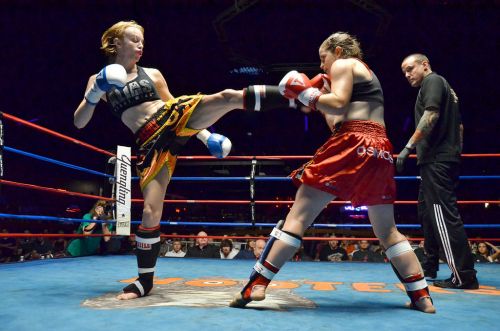
Made famous by 80s action star Jean-Claude Van Damme, this martial art has roots across the Far East, but one style dominates. Muay Thai is a furious combination of kicks, punches, elbow and knee strikes, with fighters dancing around the ring or closing into tight clinches.
This Thai style requires fighters to be in peak condition and can be brutal in the bout. Luckily there are amateur versions, where fighters compete for points rather than knockouts, and this is popular with both men and women.
Kickboxing has also spawned non-contact workout classes, combining the moves and pace of the sport with aerobics and cardio fitness.
Muay Thai camps are becoming a popular fixture of the Far East backpacker trail, with travellers checking in for weeklong ‘boot camp’ style training sessions. Expats in Thailand, Japan, Western Europe and North America can find a style of kickboxing to suit their needs.
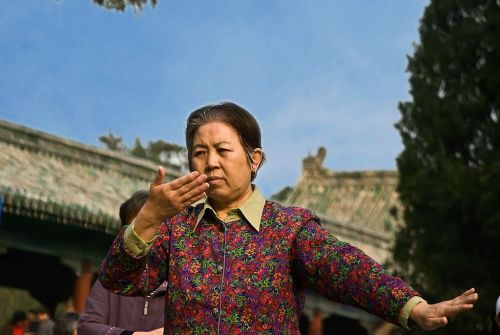
This slow, contemplative martial art is popular with the elderly in China and emphasises calm meditation as much as physical movement.
Tai Chi adherents can be found in silent crowds across the Far East, often moving in perfect, graceful unison in public spaces. It may be difficult to imagine this slow-motion movement being of any use in combat, but Tai Chi translates as “supreme ultimate fist”. By moving at a snail’s pace the students are training their bodies to make every motion with utter perfection, giving their movements deadly accuracy on the battlefield.
Most practising the style have no intention of ever meeting a foe, instead treating Tai Chi as a workout for mind, body and soul. Being slow and low impact, the martial art is perfect for the elderly, or as a starting point for people who want to gradually improve their fitness.
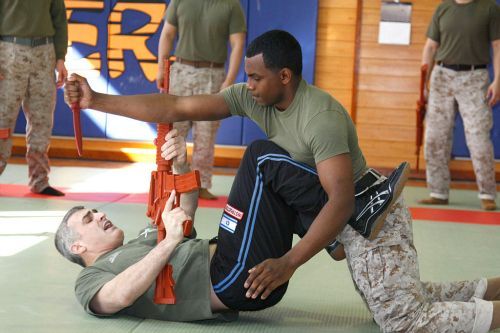
If you’re worried about personal safety, look no further than Krav Maga. Used by James Bond, Jason Bourne and Batman, this Israeli fighting style takes no prisoners.
Invented by a Hungarian Jew, Imre Lichtenfeld, who was an expert in wrestling, boxing and gymnastics, the style has been adopted by the Israeli military. Lichtenfeld and a band of friends took to the streets of Budapest to defend Jewish residents from anti-Semitic attacks, learning quickly to adapt his sporting prowess into an effective fighting form. Experts can take on opponents armed with sticks, knives and guns in a variety of real-life situations.
Krav Maga’s key tenet is situational awareness, avoiding trouble wherever possible but being sure to win if forced to fight. If push comes to shove, adherents turn their natural defensive reactions to an attack into an effective block and then quickly go on the offensive. Krav Maga emphasises quickly winning and confrontation by delivering the most damage to the opponent’s most vulnerable points as fast as possible.
It’s not for the squeamish; Krav Maga includes strikes, kicks, punches, strangles, gouges and doesn’t rule out biting. Anyone caught in the firing line can expect an agonising encounter as their eyes, nose, groin, solar plexus, ribs, knees and fingers take a quick, unforgiving battering. There’s a good reason the style has been adopted by elite Special Forces, police and intelligence services around the world.
Krav Maga’s spiritual home is Israel, but schools can be found in Britain and USA. There can be no bigger confidence boost walking home on a dark night than knowing you can bust heads like the Dark Knight himself.
Have you learned a martial art? Share your experiences in the comments!
Article by Andy Scofield, Expat Focus International Features Writer

